Vendor Products Portal v.13
The tool to motivate vendors to prepare product catalogue in your Odoo
Vendor products catalog in portal
Any portal user may create, update, and archive products related to their company. Any purchase manager can do the same for all vendor-related objects. Any Odoo internal user with an access to products might rely upon vendor data for informational purposes.
Any vendor product might be linked to your own product. In such a way a purchase manager goal becomes to match 'their' products with 'ours'. Each of our product variants might have a few related vendor products.
As soon as you installed the module, Odoo would automatically create vendor products based on existing products' supplier infos.
Screenshots
Vendor portal: main page
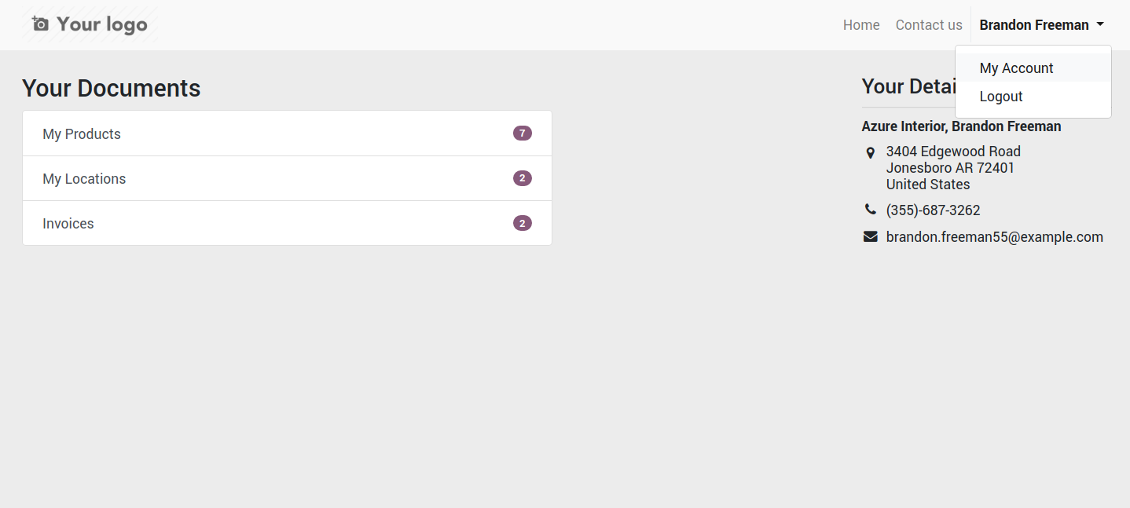
List of vendor products in portal for self-administration
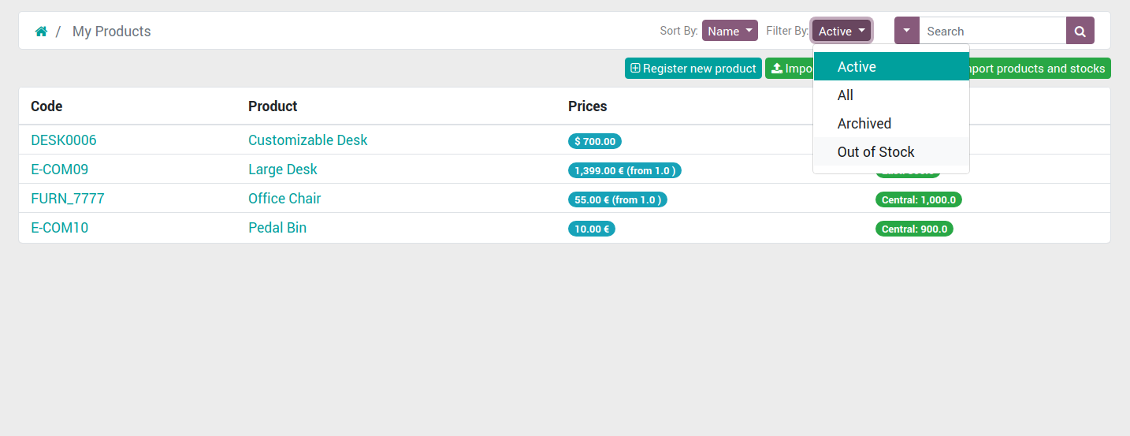
Suppliers edit product info by themselves
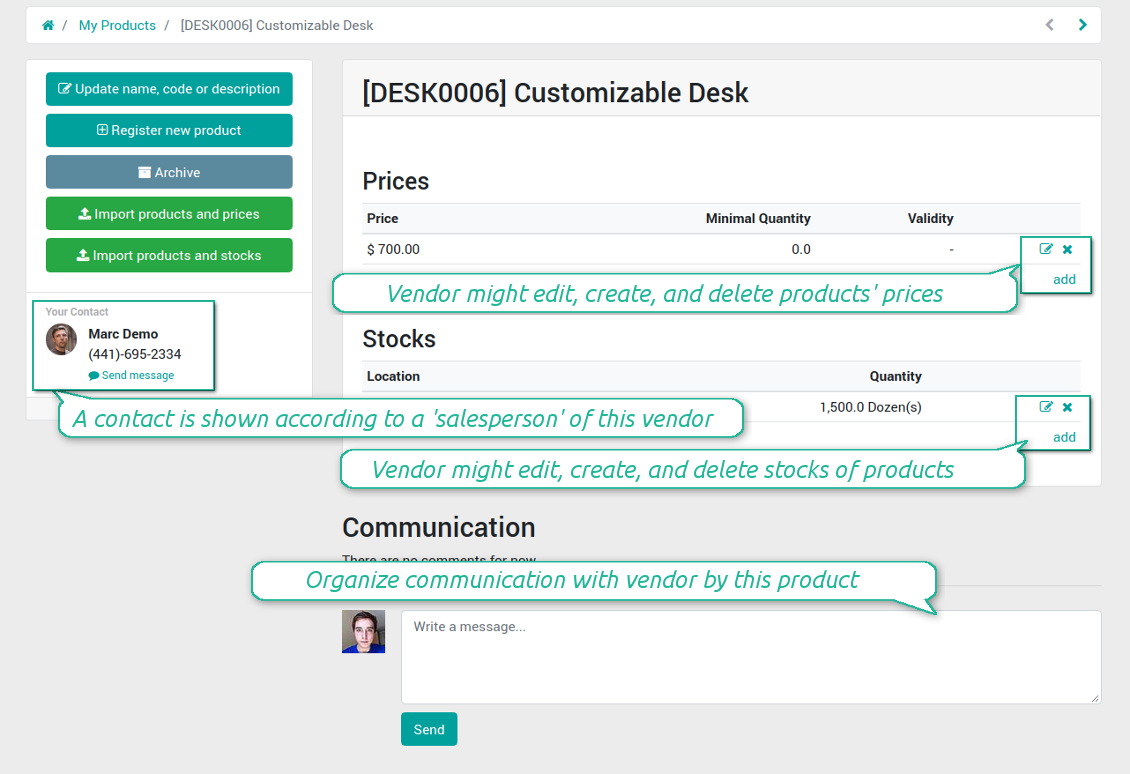
Vendor may easy change important product details
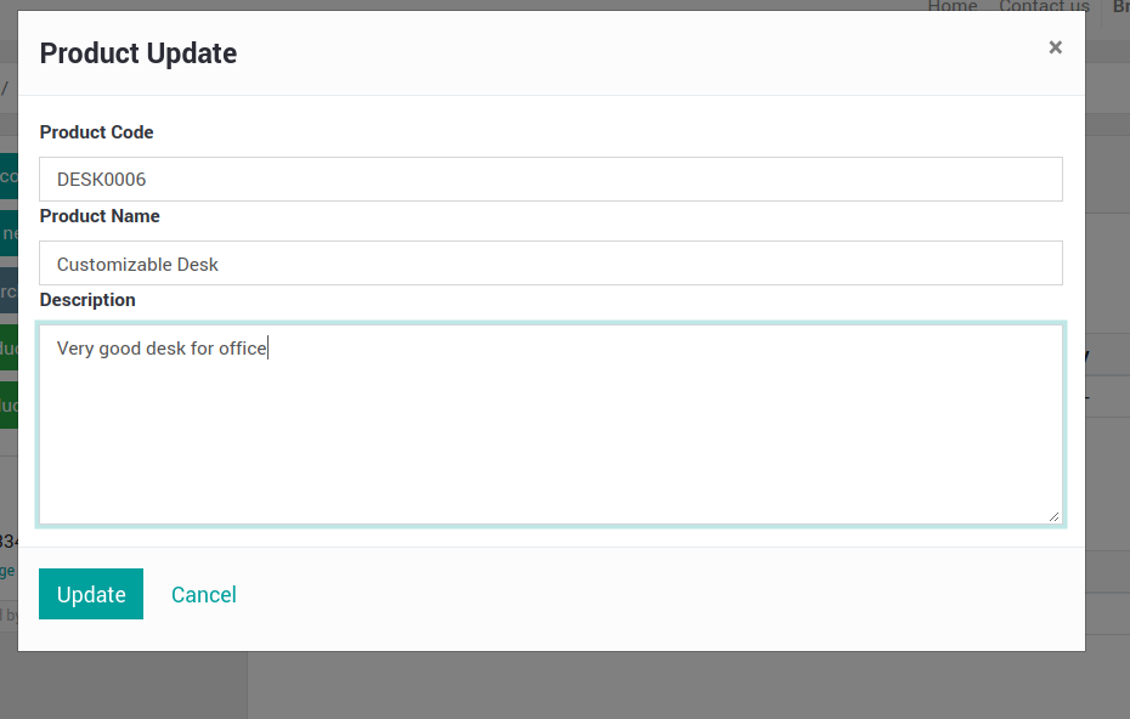
Vendors are notified about results of their actions
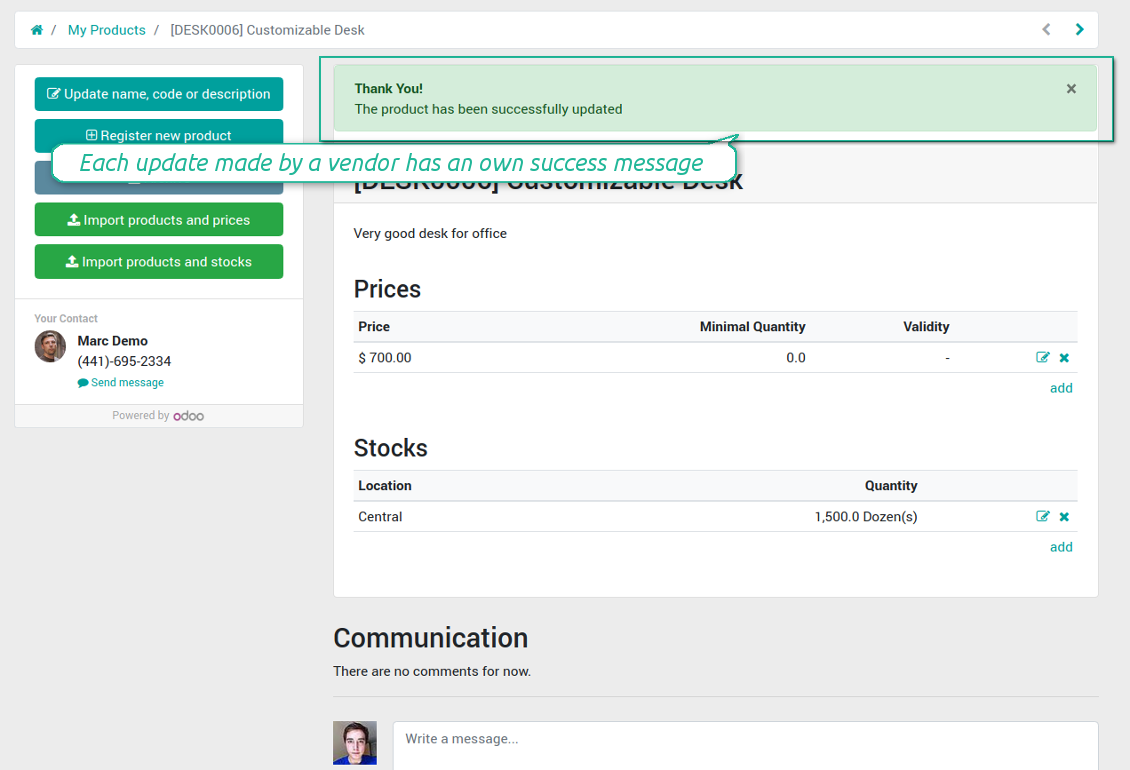
Grant vendor contacts an access to portal
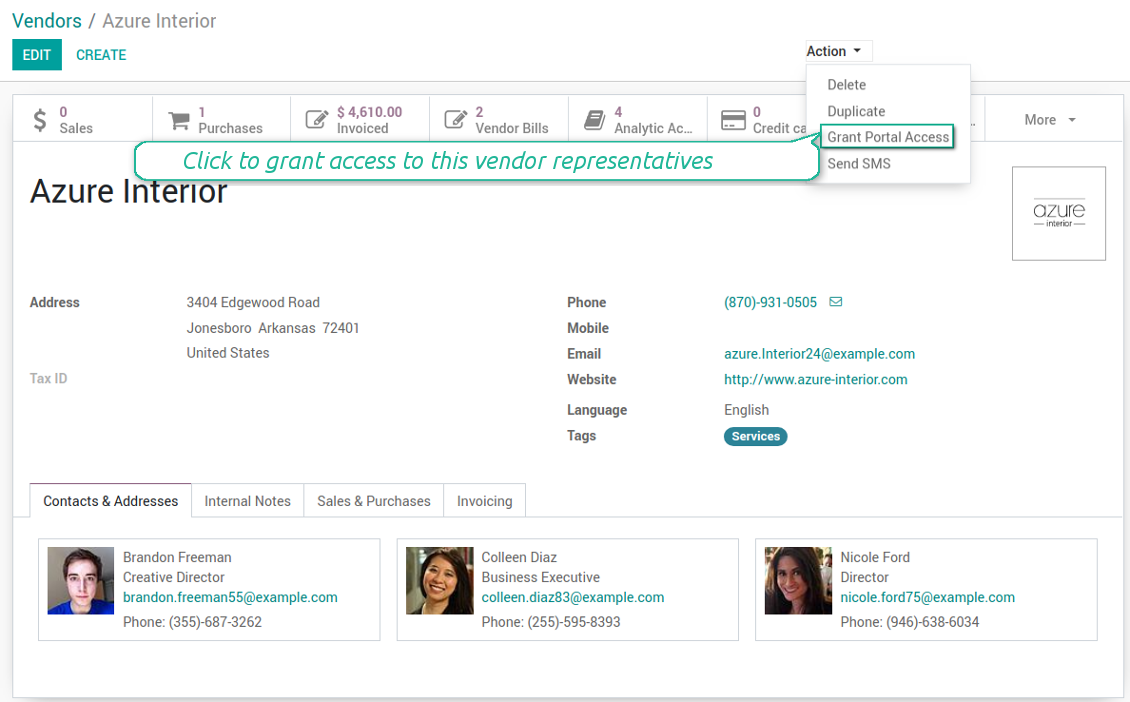
Grant vendor contacts an access to portal (2)
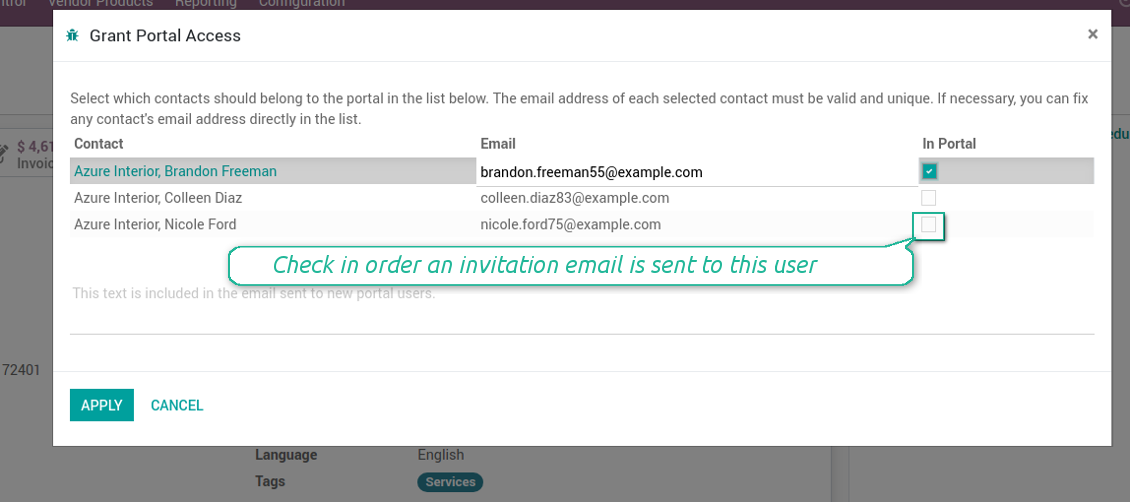
Vendor products interface (backend)
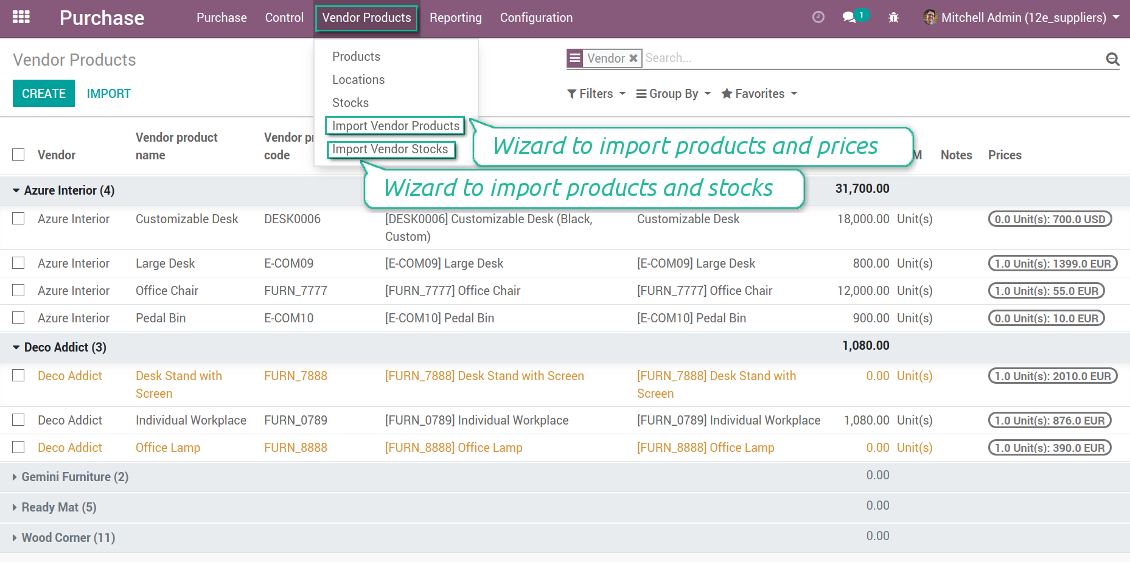
Vendor product form (backend)
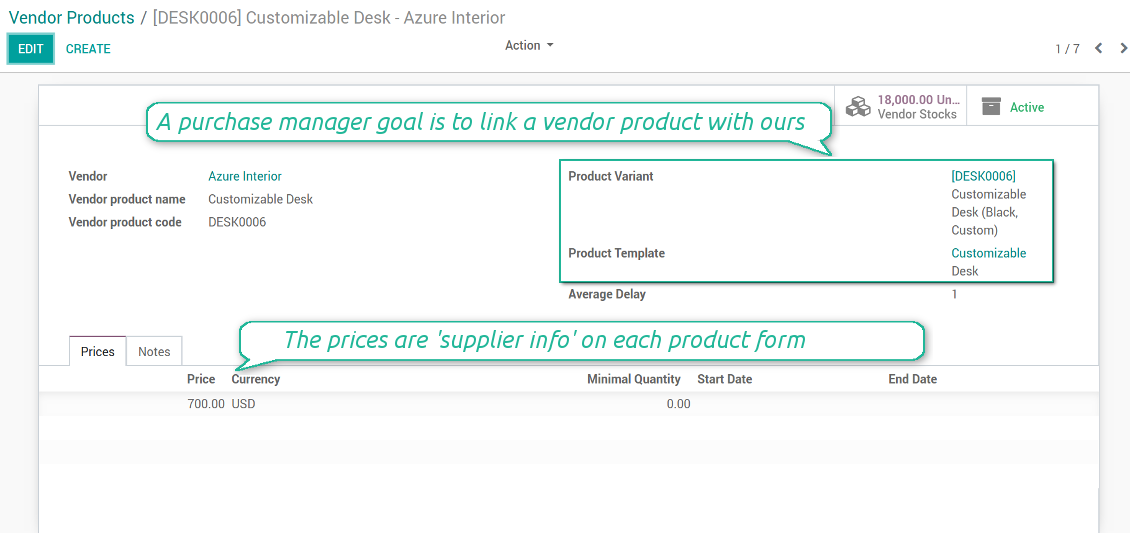
Vendor stocks control without effort
You may access info of vendor products' stocks right from product variant, product template, and supplier form views. You should just click a related button to get an overview.
How vendor stocks work
- Each stock level is provided per definite vendor location. Vendors might easily create, edit, and archive own warehouses
- Each vendor might have an unlimited number of locations. Locations are distinguished by name, address, and average delivery time
- Stock levels are manageed in vendor units of measure, but purchase managers should make sure it has the same category as our linked product. The idea is to support conversion in order internal users work with habitual figures. For example, dozens and units are fine, while dozens and hours might lead to mistakes
- Vendor stocks and locations might be switched off for portal users on the configuration page
- Stock levels are not used in our moves, but they are provided for general information. Stock levels are updated either manually or through the import process. It might be done by both portal and purchase users
Screenshots
Vendors notify you about available stocks
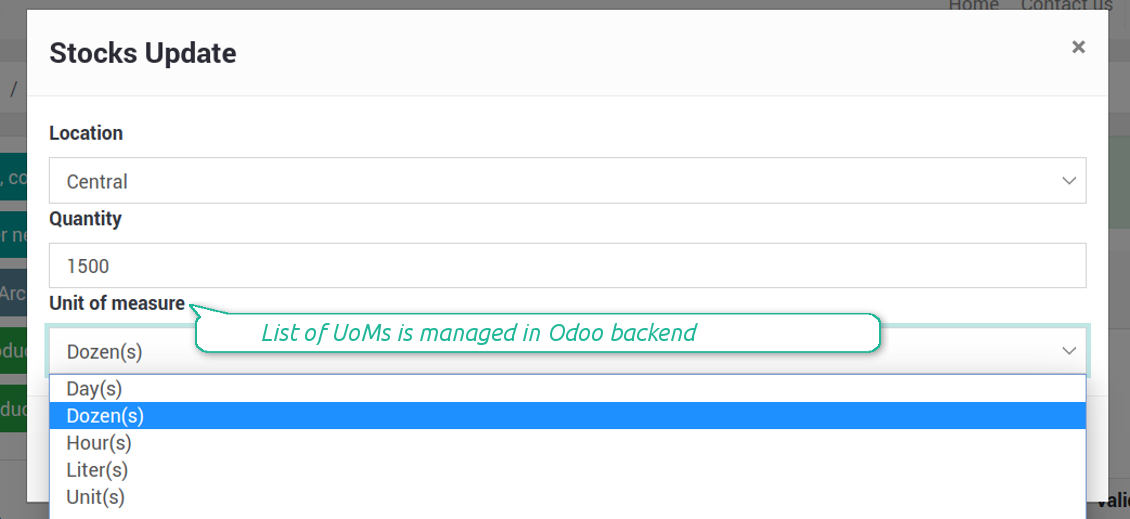
List of locations of a vendor currently logged in
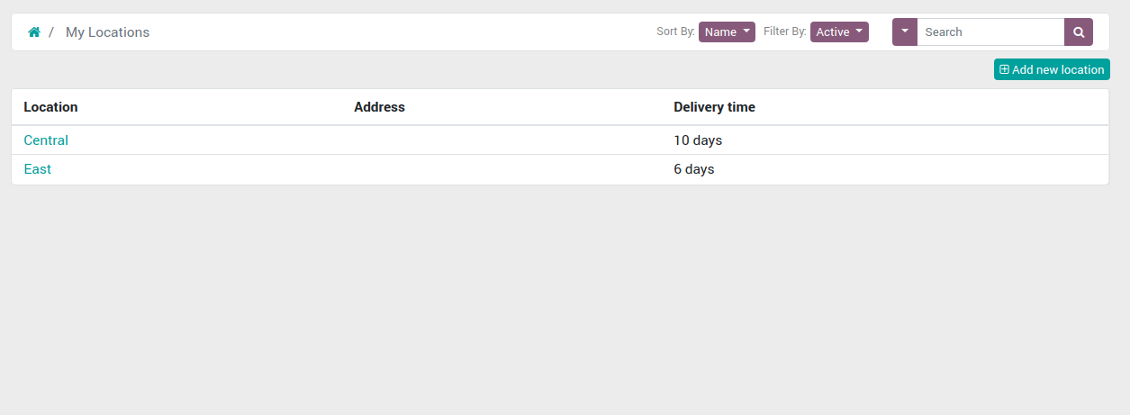
Supplier location (warehouse) in portal
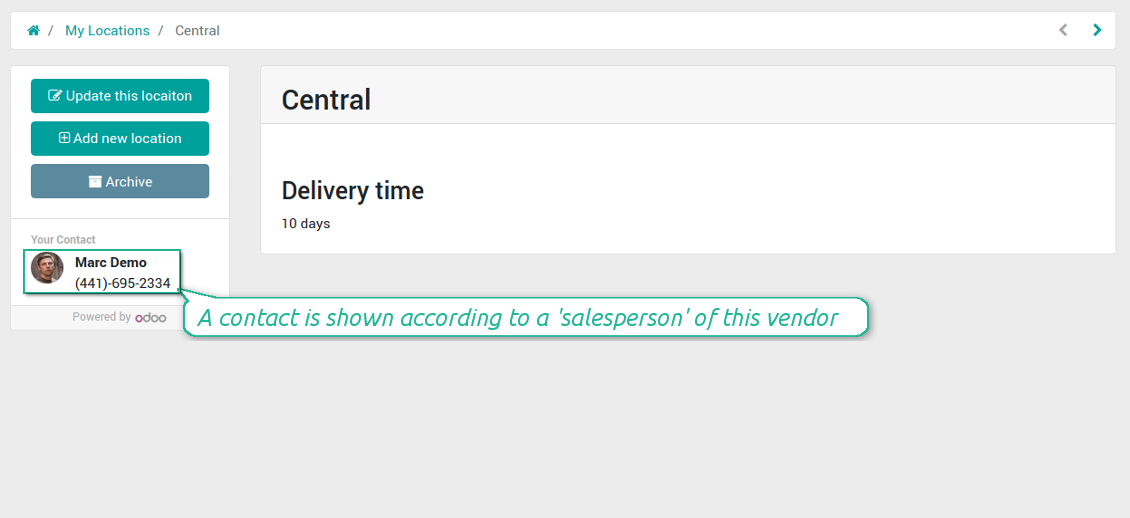
Vendors might create / update their locations
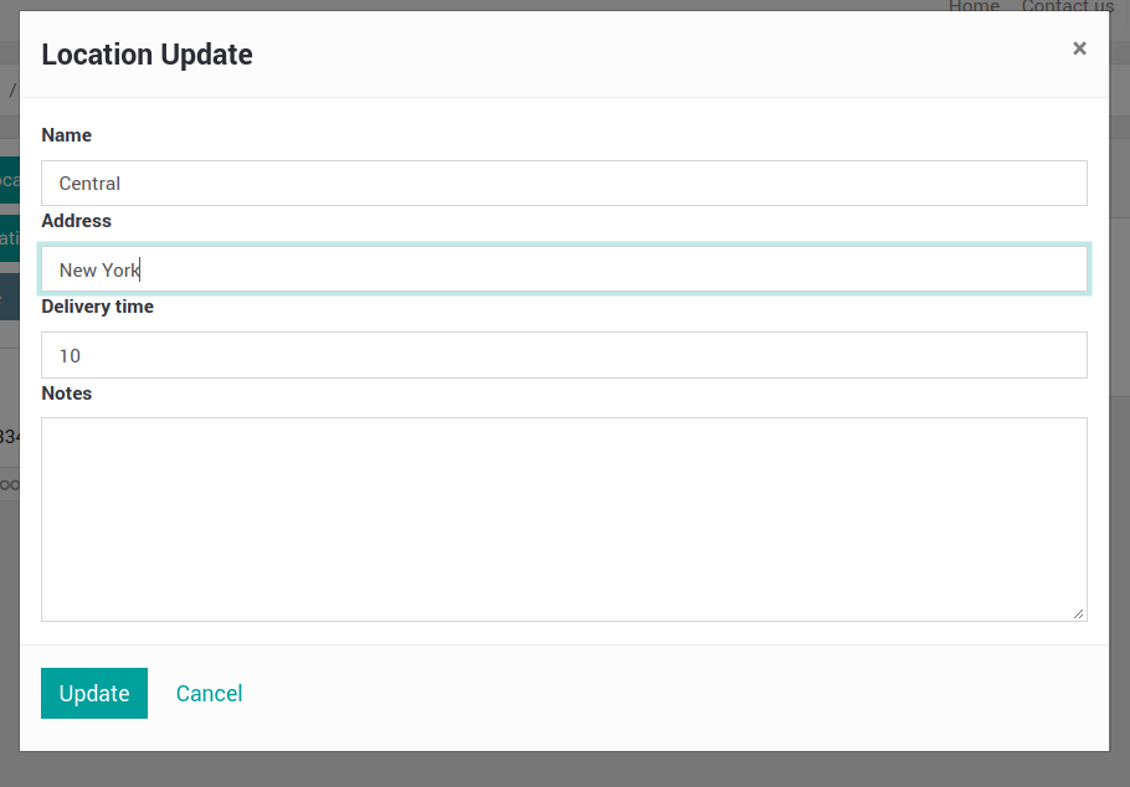
Control vendor inventories per each product (backend)
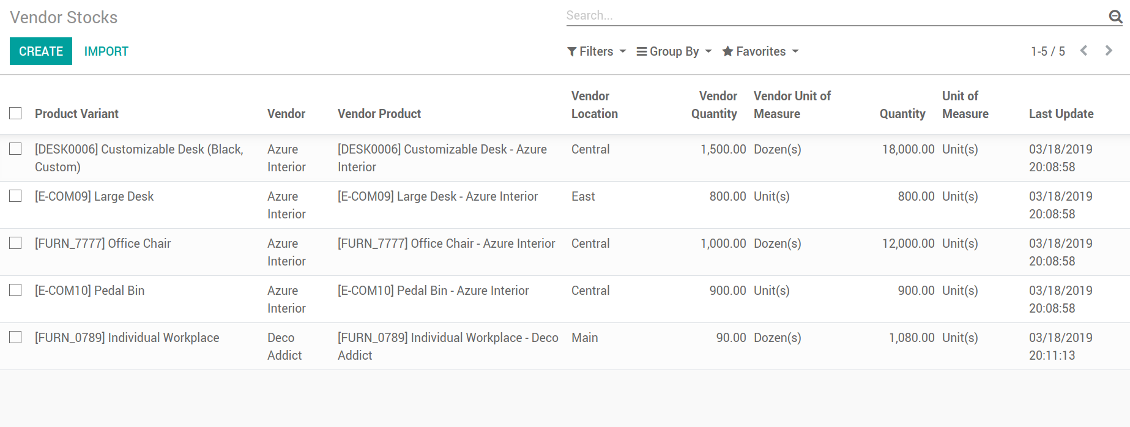
Vendor stocks on a product form (backend)
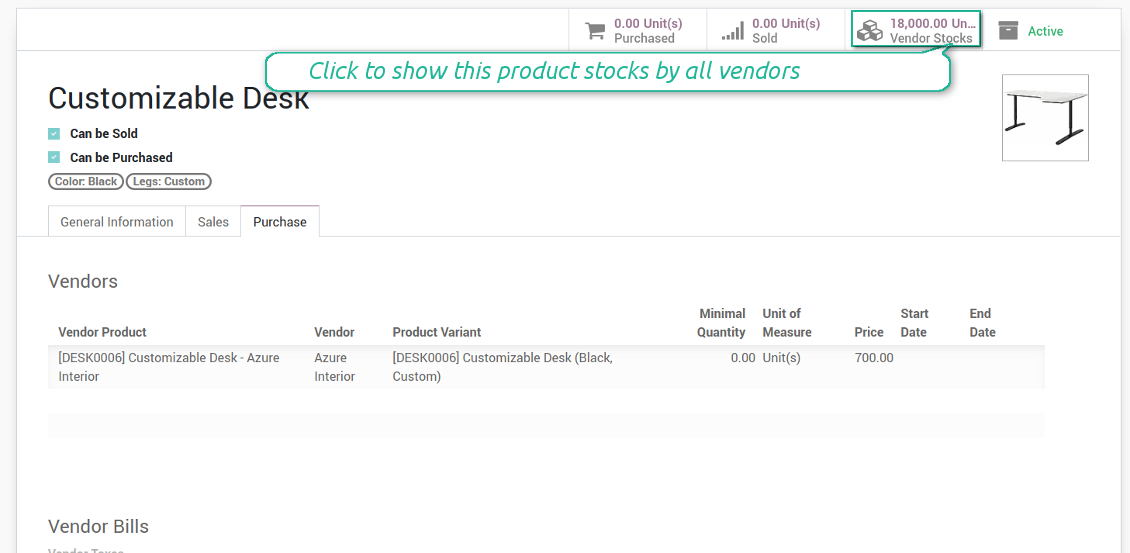
Vendor stock level form per each product (backend)
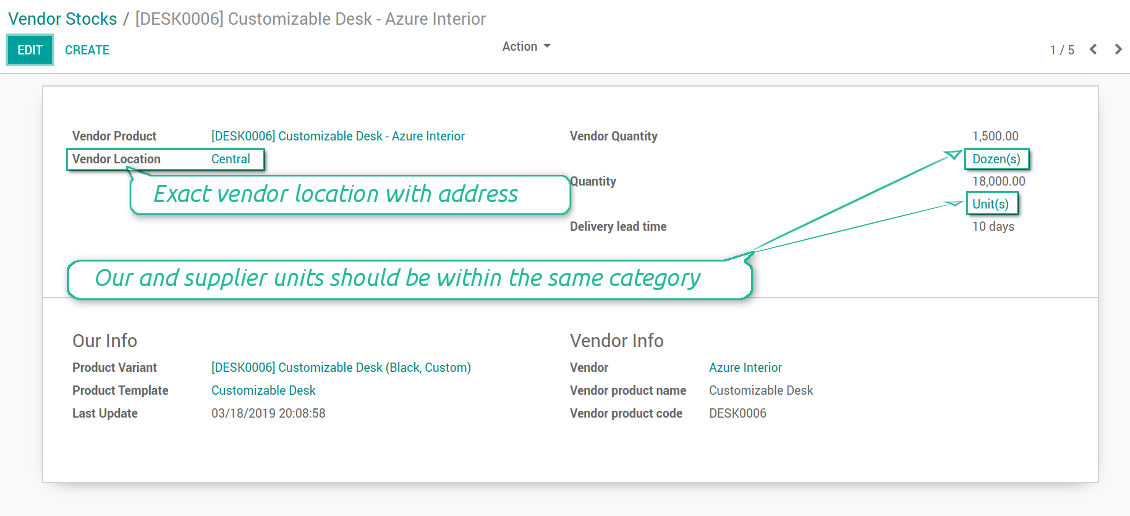
Vendor locations list (not linked to our locations!)

Vendor stocks by product templates (backend)
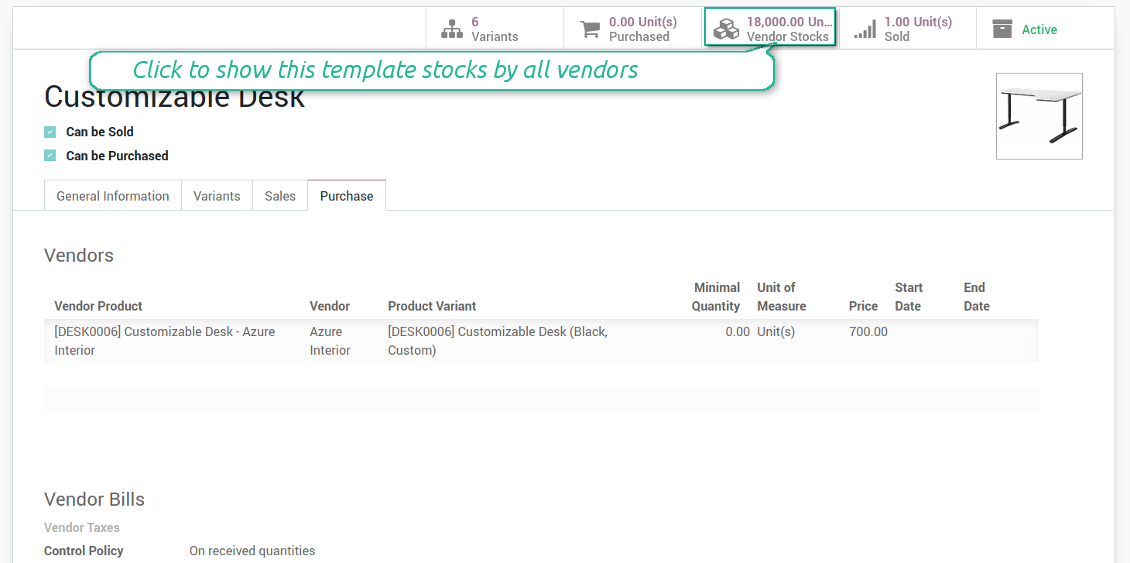
Access stocks of this supplier from a partner form (backend)
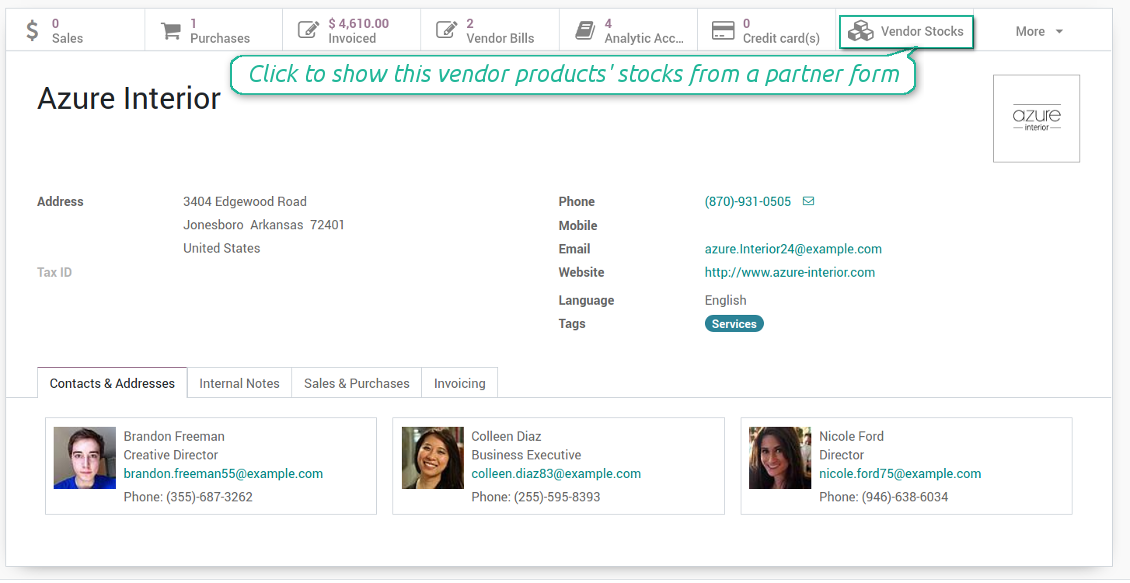
Supplier prices management and self-management
Those prices are considered as standard Odoo 'supplier info' which correspondingly are used in purchase orders.
Screenshots
Suppliers keep up-to-dated prices in portal
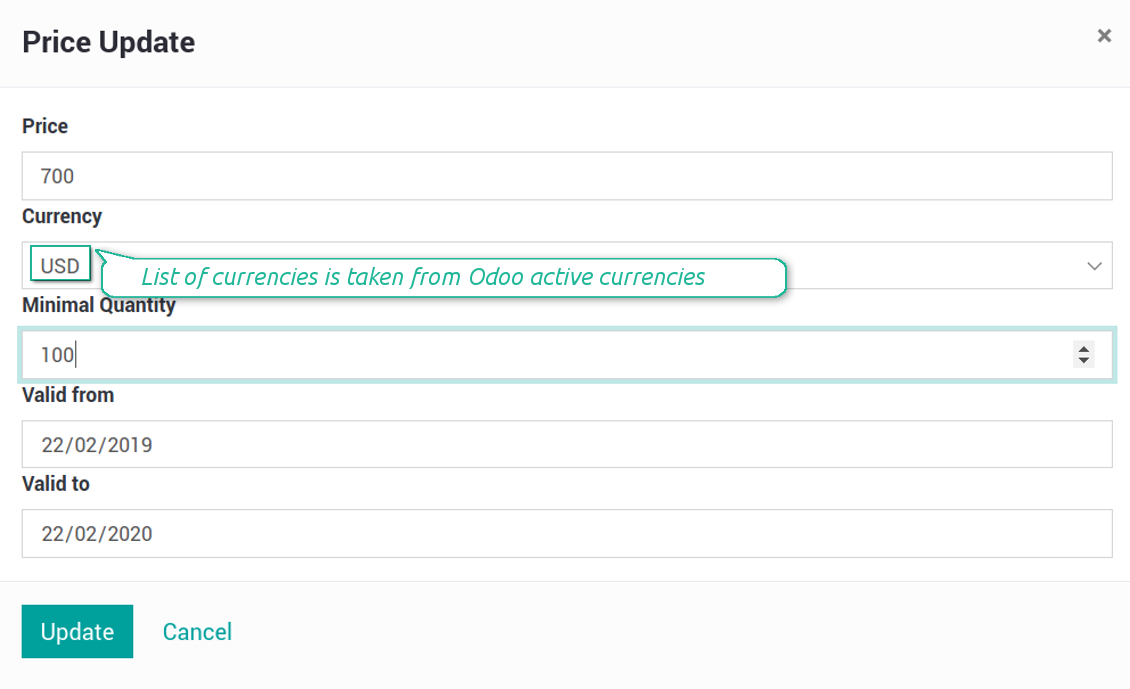
Comfortable importing of vendor product data
In such a way vendor representatives are able to keep their product info updated.
How to import vendor products and stocks
- The table format is supplied with this tool source code and would be available in the portal under the section 'Help'
- You may change the table content to provide users with more specific examples and labels. However do no not change columns' order and do not remove those: it would lead to inevitable mistakes
- The wizard offers useful tips to make a correct import. You may edit those recommendations on the configuration page, but make sure you do not remove critical advice
- Each import finishes with the special results' and errors' pop-up. It let users control of what has been actually done
- In the wizard users may select which table lines should be imported. It is useful in case the number of lines is too big to import them all
- In the wizard portal users can select whether their previous products' list should be archived. It let fully replace the product catalogue with a new one
- In the wizard it is possible to make previous prices outdated. It let users remove misleading data
- In case import can't be fully finished until Odoo stops it, contact your system administrator to increase configured time-outs
How to import vendor product and prices
- The table format is supplied with this tool source code and would be available in the portal under the section 'Help'
- You may change the table content to provide users with more specific examples and labels. However do no not change columns' order and do not remove those: it would lead to inevitable mistakes
- The wizard offers useful tips to make a correct import. You may edit those recommendations on the configuration page, but make sure you do not remove critical advice
- Each import finishes with the special results' and errors' pop-up. It let users control of what has been actually done
- In the wizard users might select which table lines should be imported. It is useful in case the number of lines is too big to import them all
- In the wizard portal users can select whether their previous products' list should be archived. It let fully replace the product catalogue with a new one
- In the wizard it is possible to mark previous stocks as not any more topical
- In case import can't be fully finished until Odoo stops it, contact your system administrator to increase configured time-outs
Screenshots
Vendors import products and stocks through portal
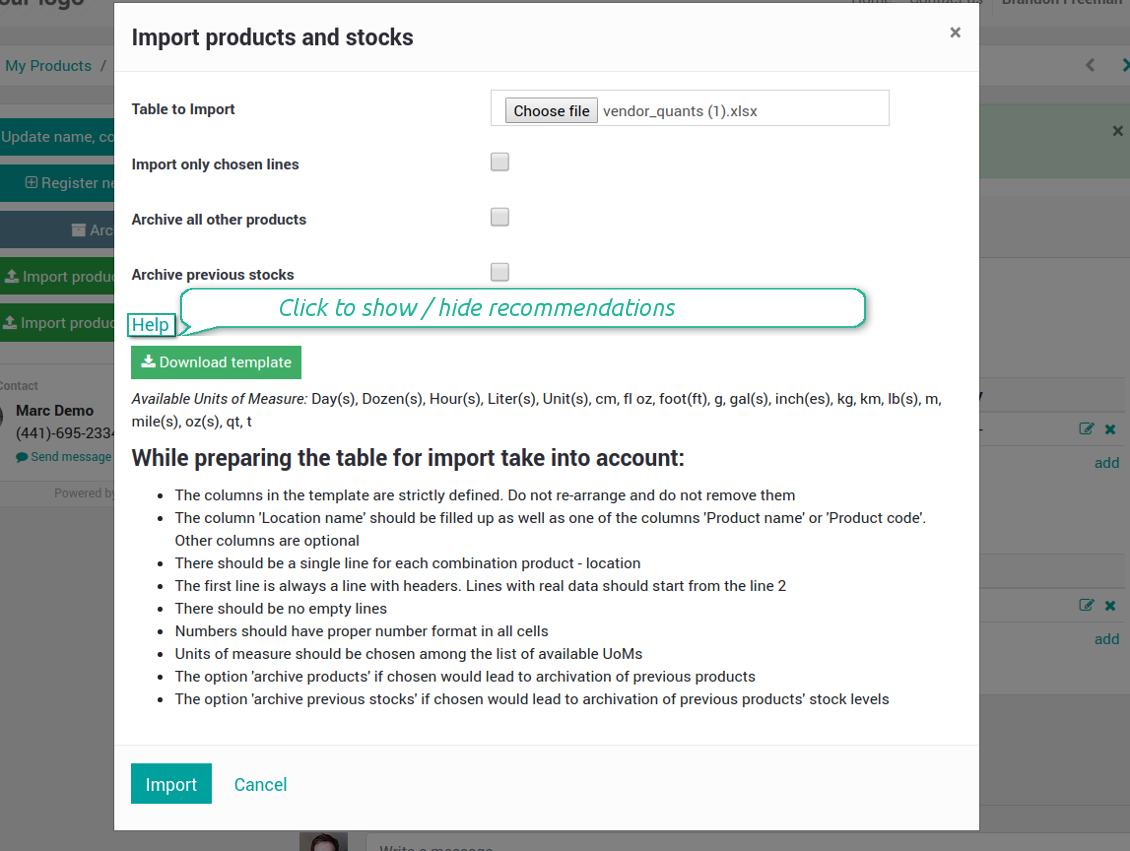
The template for vendor stock levels table (backend)

Vendors might import products and update prices
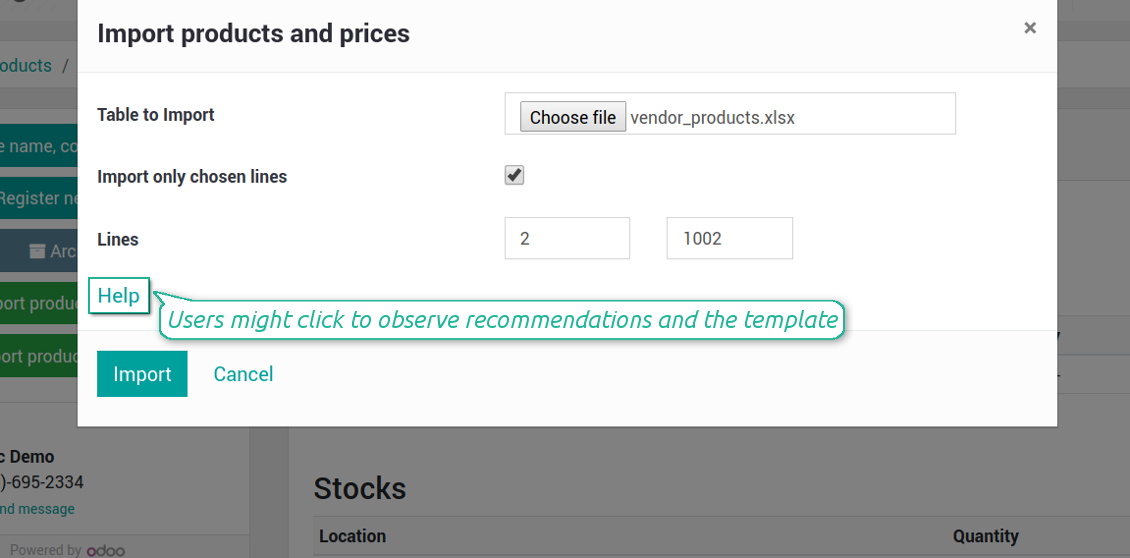
The template for vendor products' table (backend)

Import results' and errors' pop-up in portal
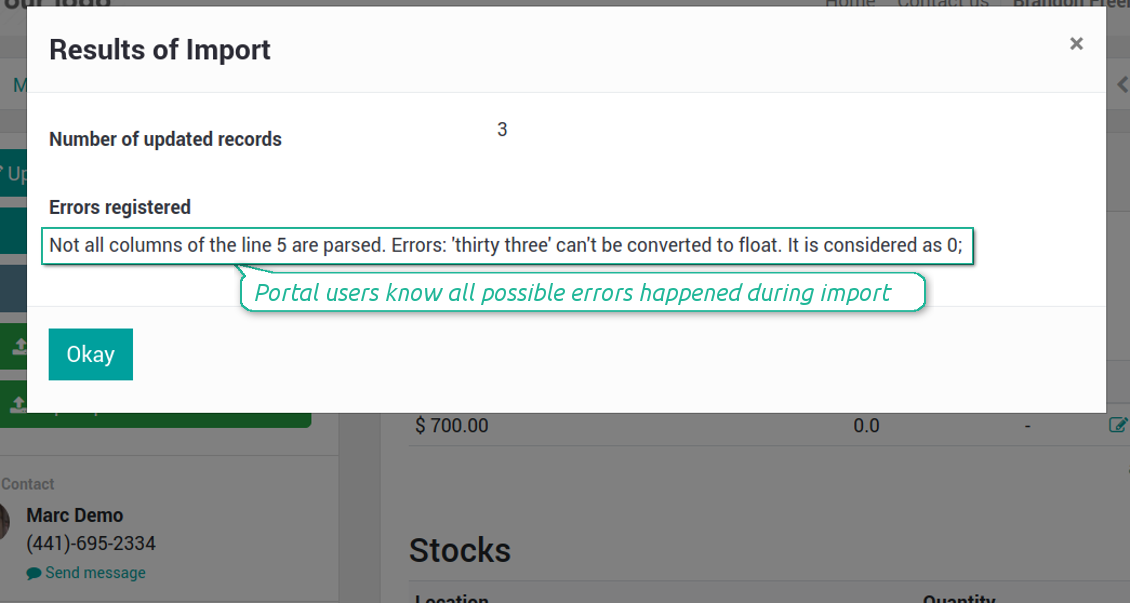
Import of vendor products and stocks (backend)
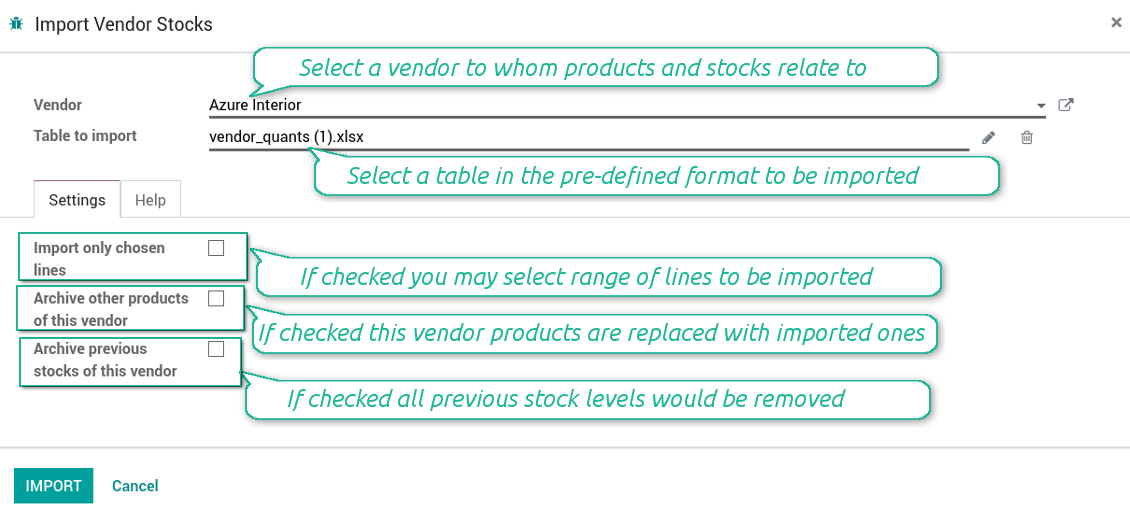
Stocks import wizard' recommendations (backend)
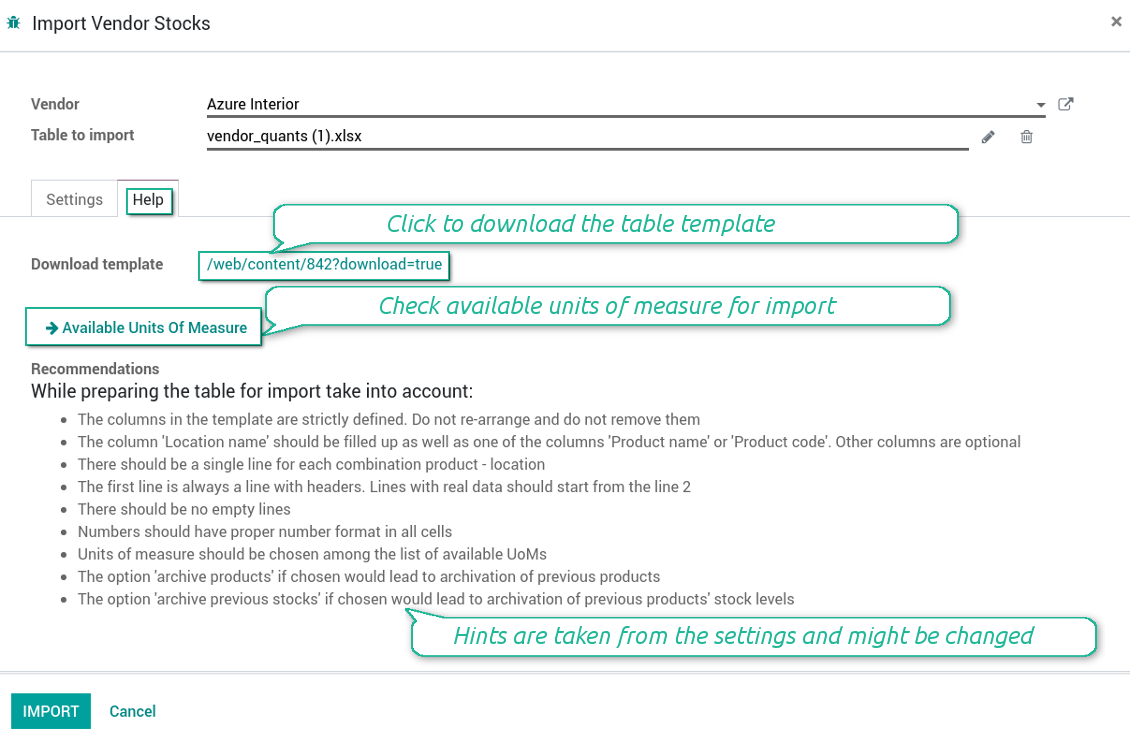
Import of vendor products and prices (backend)
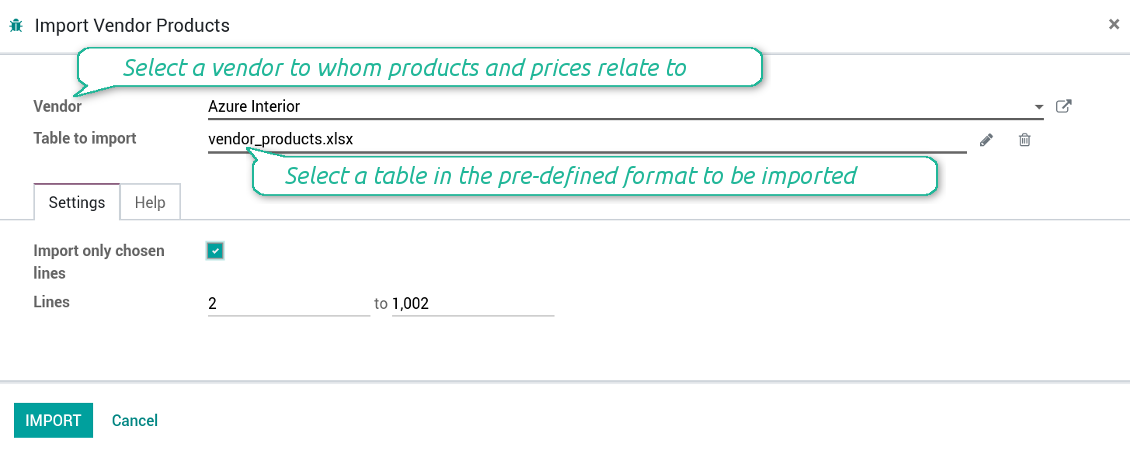
Prices import wizard goes with detailed recommendations (backend)
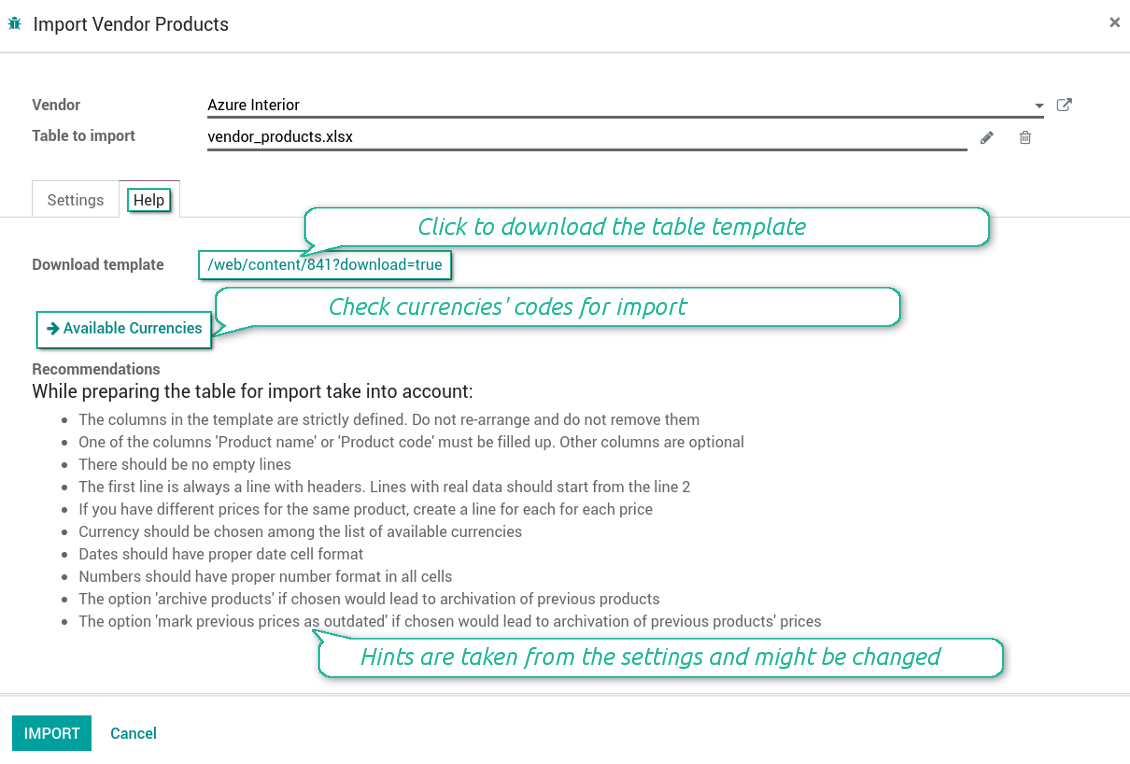
Configure your own configurations for import (backend)
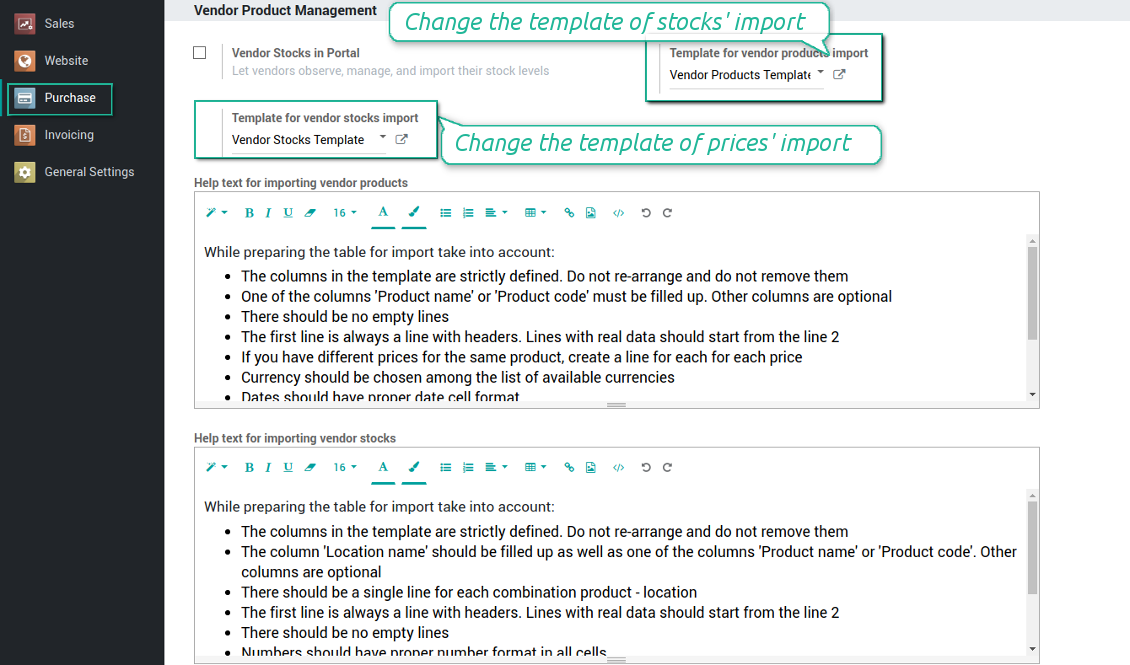
Check results and errors of import (backend)

Bug reporting
If you encounter bugs or inconsistent behavior, do not hesitate to contact us. We guarantee to provide fixes within 60 days of purchase and are intensely interested in improving our tools even after this period.
You do not need a phone number or credit card to contact us. You should only pass a short email sign-up, which does not take more than 30 seconds.
Please include as many details as possible in your request: screenshots, Odoo server logs, a full description of how to reproduce your problem, and so on. Usually, it takes a few business days to prepare a working plan for an issue (if a bug is confirmed) or provide you with guidelines on what should be done (otherwise).
Public features requests and module ideas (free development)
We are strongly motivated to improve our tools and would be grateful for any feedback. If your requirements are of public use and might be efficiently implemented, the team will include those in our to-do list.
Such a to-do list is processed regularly and does not assume extra fees. Although we cannot promise deadlines and final design, it might be a good way to get desired features without investments and risks.
You do not need a phone number or credit card to contact us. You should only pass a short email sign-up, which does not take more than 30 seconds.
The technical core to synchronize your cloud storage solution with Odoo
398€The tool to build deep and structured knowledge base for internal and external use. Knowledge System. KMS
398€The tool for time-based service management from booking appointment to sale and reviews
398€The tool to set up KPI targets and control their fulfillment by periods
The tool to automatically synchronize Odoo attachments with OneDrive files in both ways
487€The tool to automatically synchronize Odoo attachments with Google Drive files in both ways
487€The tool to configure variant prices based on attributes coefficients and surpluses
The tool to administrate vendor data about products, prices and available stocks